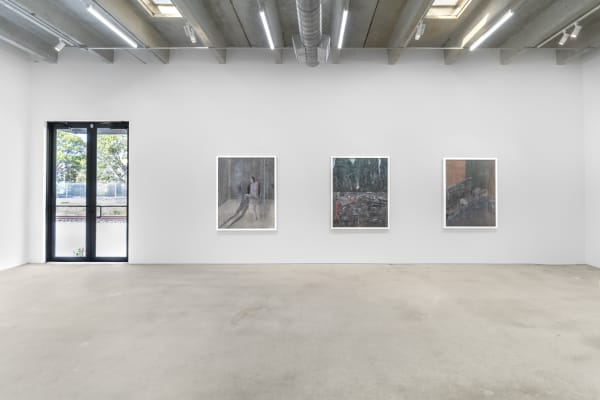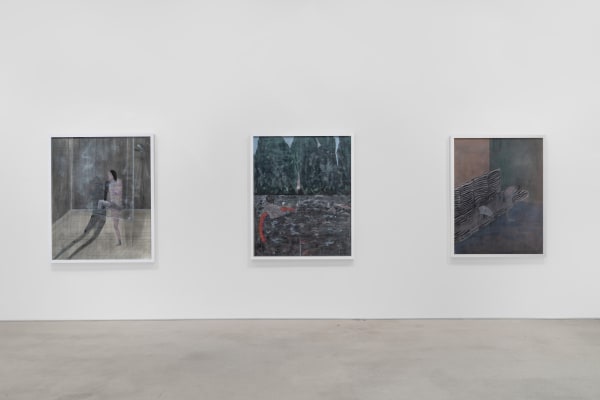Insomnia
Past exhibition
Overview
Voloshyn Gallery is pleased to present Insomnia, Ukrainian artist Maria Sulymenko’s first solo exhibition in the United States.
There is something about Maria Sulymenko's watercolors that captivates the viewer. In a style of laconic simplicity, she depicts mysterious and enigmatic environments. These are mainly interiors, but also exteriors, narrow and enclosed, surrounded by walls that seem to be tangible. In this silent atmosphere of transparent gray air, the eye does not reach the horizon—there seems to be none.Sulymenko's sceneries are barely inhabited. When nameless figures appear (not characters, only beings?), they are mostly alone, sometimes two or three of them. Crossroads of human relationships are rare here.
Despite a possible search for a connection, the inhabitants of Maria Sulymenko’s works do not really belong; they also never look directly at the viewer but gaze away.It is as if time has stood still. Captured in a moment that seems to be prolonged. A moment transforming into a state; not becoming, but rather—and only—being. Caught between ‘no longer’ and ‘not yet’, waiting for something to emerge, to happen, perhaps to change, Sulymenko's surreal world is a liminal space, a frozen moment between reality and the imagination, between nostalgia and sadness, between comfort and unease. Like the insomniac state, her world exists in a perpetual ‘in-between’. Are we finally waking up from this bad dream, or are we falling asleep to rest from this madness?
“Something is missing, but what this is, one does not know,” writes Bertolt Brecht in Mahagonny. Maria Sulymenko is not so much concerned with a particular loss or disappearance, a distinctive pain or grief, as with the fragility of life and the inevitability of darkness. She depicts loneliness, but also deliberately chosen solitude; angst and traumatic fears, as well as contemporary distresses and anxieties that lead to absurd situations and the imaginary. She quietly and unpretentiously questions the difficulties of simply being, of merely enduring in this world. There is no naive optimism, but there are shreds of hope, the artist claims, an anticipation of a better time. “Each moment is a leap forwards from the brink of an invisible cliff, where time’s keen edges are constantly renewed. We lift our foot from the solid ground of all our lives lived thus far and take that perilous step out into the empty air. Not because we can claim any particular courage, but because there is no other way.”
1. “Etwas fehlt, was das ist, weiß man nicht.“ / “Something is missing, but what this is, one does not know.” Rise and Fall of the City of Mahagonny (German: Aufstieg und Fall der Stadt Mahagonny) is a political-satirical opera, happening in Mahagonny, a fictional city in then North America, inhabited by fortune seekers, prostitutes, and shady businessmen (and women) where absolutely anything goes—except having no money. Composed by Kurt Weill to a German libretto by Bertolt Brecht, it was first performed in 1930 in Leipzig.2 The Booker Prize-winner Han Kang's novel The White Book is a lyrical and disquieting exploration of personal grief, written through the prism of the color white. (Portobello Books, London, 2017, translated from the Korean by Deborah Smith.)
Opening Reception: Friday, January 12, 2024, 6 – 9 pm
Gallery hours: Tuesday – Saturday, 11am – 5pm and by appointment
802 NW 22nd Street, Miami, FL USA
For all press inquiries, contact: info@voloshyngallery.art
Installation Views







